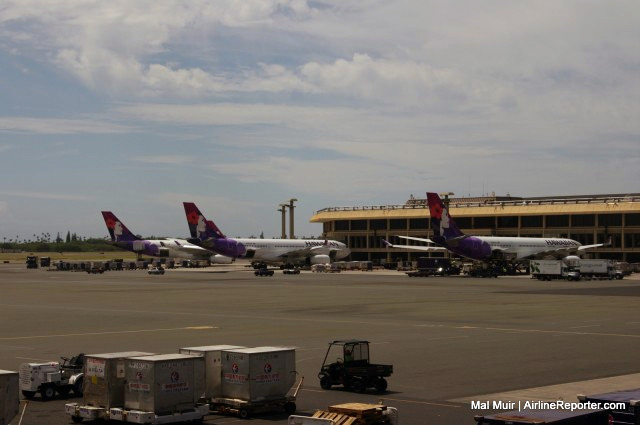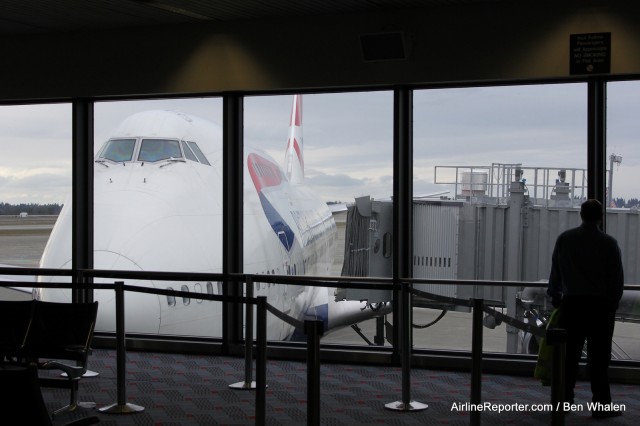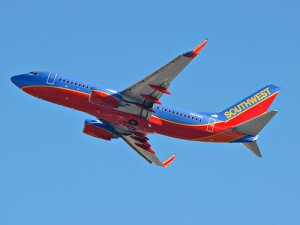
Hawaiian Airlines Airbus A330s at the terminal in Honolulu – Photo: Mal Muir | AirlineReporter.com
Getting to New Zealand from the United States is a very limited affair. The only way to get there directly is with Air New Zealand and at some times of the year (around Christmas, especially) capacity becomes limited due to operating only three daily flights (two from LAX, one from SFO).
More recently a new choice was offered to New Zealand; Hawaiian Airlines flying from Honolulu (HNL) to Auckland (AKL). The new flights started in March and they fly three times a week between the two cities.
Using their new Airbus A330-200 aircraft, Hawaiian’s service to the south Pacific allows one-stop service from a number of west coast cities (although all cities, apart from Seattle, require an overnight stay in Honolulu when southbound). After I had flown down to Hawaii from Seattle and spent a brief two hours in the warmth that permeates Honolulu airport, it was time to board another Hawaiian aircraft for my journey to New Zealand.

British Airways Boeing 747-400 at Seattle
Although I know many readers of this site are more interested about the flight itself, I tend to be more intrigued with what goes one between searching for a ticket and stepping on to the plane. Odd for some, I know, but I wanted to share my own insight.
My most recent adventure started when I decided to go to Paris (CDG) from Seattle (SEA) for vacation. After some work, I narrowed my dates to flying out on a Thursday so that I could have a full weekend in-country. Last year, I made the same trip on Icelandair and chose that airline mostly on having the lowest fare. I wasn’t sure if I wanted to go with the lowest fare this time; I was also interested in the experience, so I decided to start my ticket hunt early. This all resulted with me flying on a British Airways Boeing 747-400 out of Seattle.

Southwest Airlines Boeing 737 heading out of Las Vegas
In years past, Southwest Airlines has been known to consistently make a profit. However, Southwest wasn’t able to keep up in the economic downturn and the end of hedged fuel prices. Then the airline saw three quarters of losses, but no more!
Southwest announced today that it made $54 million during the second quarter this year. This is far less than the $321 million they made during the same time last year, but better than being in the red.
Of course, like most of the world economy, Southwest is not fully in the clear. They are still taking a careful approach to the near future. Southwest chairman and chief executive officer Gary Kelly points out that, “demand for business travel remains weak, and we continue to stimulate traffic with more discounted and promotional fares.” He isn’t confident that Southwest will see a profit for the third quarter. Southwest is cutting about 4% or 1,400 employee positions through early-out offers, hoping to keep the airline profitable.
To compare, Continental Airlines posted a loss of $213 million, American Airlines posted a $390 million loss and United Airlines posted a $28 million profit. Additional airlines should be posting their second quarter results in the next day or so.
Image: gTarded

Two British Airway's Boing 777s
It is not often when a group of people can come together, see the big picture, and be willing to take a cut in pay to potentially save a company. The British Airline Pilots Association voted 94% to cut their salaries by 2.6% and save the company about $42million per year. No one wants to have their salary cut, but 800 other staff members already agreed to work for free and thousands more took additional pay cuts. The pilots can see the writing on the wall and realize it might be better to sacrifice short-term, to save the company in the long-term.
Image: CS Chaulk

Virgin and British Aiways Boeing 747-400's racing for the finish (yes, I am sure this is photoshopped)
Virgin Atlantic and British Airways have had a cold war going on for years, according to Sir Branson. Now he is taking advantage of British Airways’ admission of financial difficulty by urging the British government not to financially assist the legacy carrier. He states that British Airways is, “not worth much.”
Although Sir Branson might be trying to stir up trouble, British Airways is not in the best financial shape. British Airways’ CEO Willie Walsh has a self-imposed June 30 deadline which he calls, “a fight for survival.”
He recently asked all 40,000 employees to work up to four weeks without pay in an effort to keep the airline afloat.
Sir Branson, who founded the privately held Virgin Atlantic, obviously has much invested if British Airways fails. “We and others are standing by ready to take on their routes and runway slots at Heathrow if they get into serious trouble,” Sir Branson stated re-assuring the government their nation would still have a viable transportation network.
A British Airways spokes person calls Sir Branson’s comments as “fantasy.” The airline stated, “There are no talks with the Government and there will be no talks. We have opposed state aid and our position has not changed.” Both British Airways’s CEO Walsh and finance director Keith Williams have announced they will work for free during the month of July.
Even if British Airways pulls through and Branson is just in fantasy-land, it is never a good sign having an airline (or any company for that matter) asking its employees to work for free. In this economic time, nothing is impossible and it will be interesting to see how this plays out.
Source: dailymail Image: SamR




